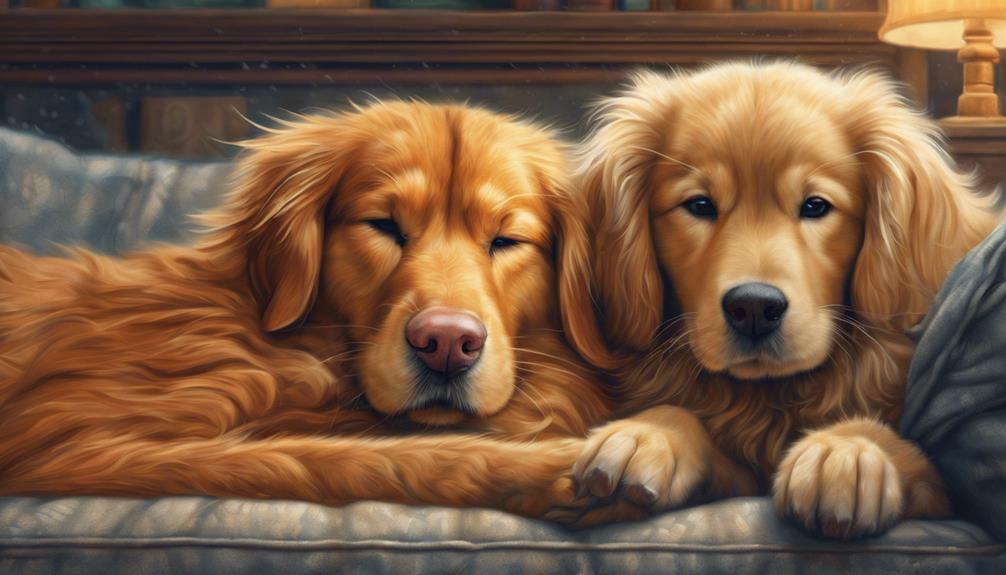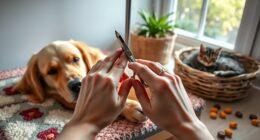When crate training a puppy, it is important to follow three key steps. Firstly, ensure that the crate is the right size for comfort and safety, allowing the puppy to stand, turn, and lie down comfortably. Next, slowly introduce the crate to the puppy by placing it in a family area and encouraging voluntary entry with treats or toys to create positive associations.
Finally, establishing a consistent schedule with clear expectations for crate use, elimination, and exercise helps in providing security and stability, leading to quicker and more effective results. These steps are vital for successful puppy crate training.
Key Takeaways
- Establish a consistent routine for training success and comfort.
- Use positive reinforcement like treats and praise for desired behaviors.
- Introduce the crate gradually with positive associations.
- Address common challenges promptly with patience and professional guidance.
- Prioritize security, stability, and clear expectations in the training schedule.
Crate Size and Material Selection
When crate training a puppy, it's important to select the appropriate crate size and material to guarantee their comfort and safety throughout the training process. The crate size should allow the puppy to stand up, turn around, and lie down comfortably. Considering an adjustable crate is beneficial as it can grow with your puppy, preventing potential accidents due to confinement issues.
Metal crates are a popular choice for their durability and ease of cleaning, making them suitable for training purposes. They also provide adequate ventilation for the puppy. On the other hand, plastic crates offer sturdiness and portability, making them ideal for travel or moving around the house.
It's important to avoid fabric and wood crates for crate training, as they may lead to chewing and destruction, posing risks to the puppy's safety and the training process. By choosing the right crate size and material, you can create a secure and comfortable environment for your puppy, reducing the likelihood of accidents and promoting successful crate training.
Gradual Introduction to the Crate

After ensuring the crate size and material are suitable for your puppy, the next step in crate training is gradually introducing them to the crate in a positive manner. Start by placing the crate in a family area where the puppy can explore it at their own pace.
Encourage the puppy to enter the crate voluntarily by placing treats or toys inside. It's crucial to create positive associations with the crate. Gradually close the crate door for short periods while the puppy is calm and comfortable, always monitoring their comfort level. Adjust the training pace accordingly based on how the puppy responds.
Make sure to feed meals near or inside the crate to further associate it with positive experiences. Remember to incorporate potty breaks into the schedule and use positive reinforcement throughout the gradual introduction process. This approach will help the puppy feel at ease in their crate and view it as a safe and comfortable space.
Establishing a Consistent Schedule
To successfully train your puppy using a crate, it's essential to establish a consistent schedule that includes set times for crate use, elimination, and exercise. Consistency is key in the crate training process to guarantee effective results. Here are four vital points to ponder when establishing a consistent schedule for your pup:
- Regular Routine: A fixed routine helps your puppy anticipate potty breaks, meals, and playtime, making the training process smoother.
- Security and Stability: Following the same schedule daily creates a sense of security and stability for your puppy, helping them feel comfortable and secure in their environment.
- Expectation Setting: Establishing set times for crate use, elimination, and exercise aids in setting clear expectations for your puppy, facilitating the training process.
- Adaptation: By sticking to a consistent schedule, your puppy learns expectations and adapts more easily to being crate trained, leading to quicker and more effective results in potty training and overall obedience. Consistency in the schedule will help your puppy become well-adjusted and crate trained in no time.
Frequently Asked Questions
What Is a Good Crate Training Schedule for Puppies?
We establish a structured crate training routine for puppies, gradually increasing crating time as they age. Puppies under 4 months should not exceed 3-4 hours in a crate. Consistency in schedules aids in bladder control and positive behavior.
How Many Times a Day Should You Crate Train a Puppy?
We crate train a puppy based on age and bladder control. For young pups under 6 months, crating every 2-4 hours is ideal. Older puppies can be crated 3-4 times daily. Consistent crating aids in potty training and establishing routine.
How Long Does It Take for a Puppy to Get Used to Crate Training?
Getting a puppy accustomed to crate training is like planting a seed; it takes time and patience. Factors like age and temperament influence how long it takes. Consistent methods can speed up acceptance, with some pups adjusting within a week.
Should I Put My 8 Week Old Puppy in a Crate at Night?
Yes, we should put our 8-week-old puppy in a crate at night. It's beneficial for their safety and development. By following guidelines based on their age, introducing the crate gradually, and being prepared for bathroom breaks, we can create a positive crating experience.
Can the Puppy Crate Training Schedule also be used for Crate Potty Training?
Yes, the puppy crate training schedule can also be used for crate potty training. By following the crate potty training schedule, you can teach your puppy when and where to go potty. This method can help establish a routine and minimize accidents in the house.
How Can I Modify the Daytime Crate Training Schedule for My Puppy to Adapt for Nighttime?
Modifying the puppy crate training schedule nighttime success involves gradually shifting the timing of feeding, playtime, and bathroom breaks to align with the nighttime schedule. Start by gradually moving the crate closer to your bedroom and adjusting the bedtime routine to help your puppy adapt to the new routine.
Conclusion
To sum up, crate training is an essential part of raising a well-behaved puppy. By selecting the right size and material for the crate, gradually introducing your puppy to it, and establishing a consistent schedule, you can set your furry friend up for success.
For example, I recently started crate training my new puppy, and after following these steps, he now willingly goes into his crate for naps without any fuss.
Remember, patience and consistency are key in crate training.










